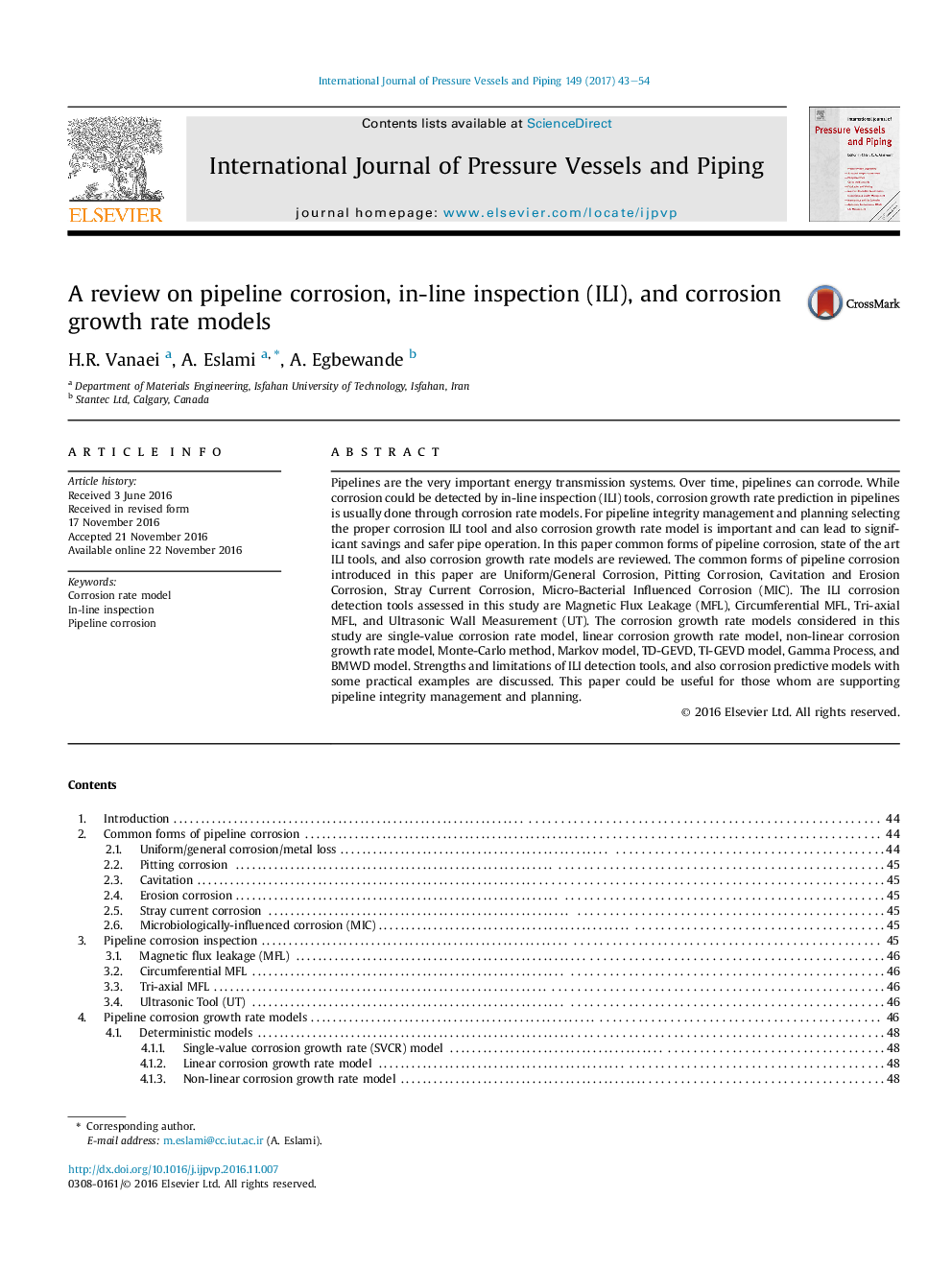| Article ID | Journal | Published Year | Pages | File Type |
|---|---|---|---|---|
| 5016910 | International Journal of Pressure Vessels and Piping | 2017 | 12 Pages |
â¢Different forms of pipeline corrosion are explained.â¢Common In-Line Inspection (ILI) tools and corrosion growth rate models are introduced.â¢Strength and limitations of corrosion growth rate models/ILI tools are discussed.â¢For pipeline integrity management programs using more than one corrosion growth rate model/ILI tool is suggested.
Pipelines are the very important energy transmission systems. Over time, pipelines can corrode. While corrosion could be detected by in-line inspection (ILI) tools, corrosion growth rate prediction in pipelines is usually done through corrosion rate models. For pipeline integrity management and planning selecting the proper corrosion ILI tool and also corrosion growth rate model is important and can lead to significant savings and safer pipe operation. In this paper common forms of pipeline corrosion, state of the art ILI tools, and also corrosion growth rate models are reviewed. The common forms of pipeline corrosion introduced in this paper are Uniform/General Corrosion, Pitting Corrosion, Cavitation and Erosion Corrosion, Stray Current Corrosion, Micro-Bacterial Influenced Corrosion (MIC). The ILI corrosion detection tools assessed in this study are Magnetic Flux Leakage (MFL), Circumferential MFL, Tri-axial MFL, and Ultrasonic Wall Measurement (UT). The corrosion growth rate models considered in this study are single-value corrosion rate model, linear corrosion growth rate model, non-linear corrosion growth rate model, Monte-Carlo method, Markov model, TD-GEVD, TI-GEVD model, Gamma Process, and BMWD model. Strengths and limitations of ILI detection tools, and also corrosion predictive models with some practical examples are discussed. This paper could be useful for those whom are supporting pipeline integrity management and planning.
